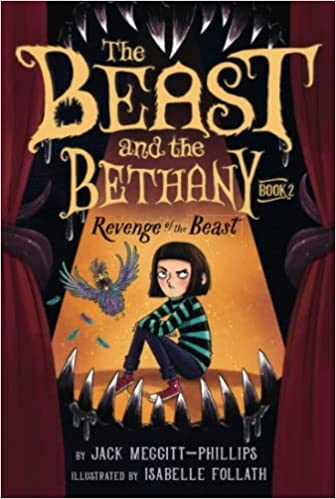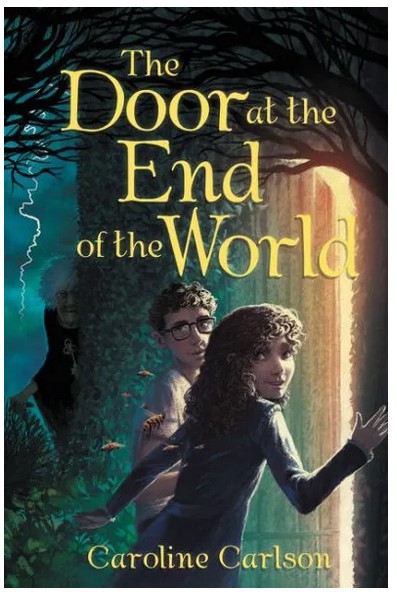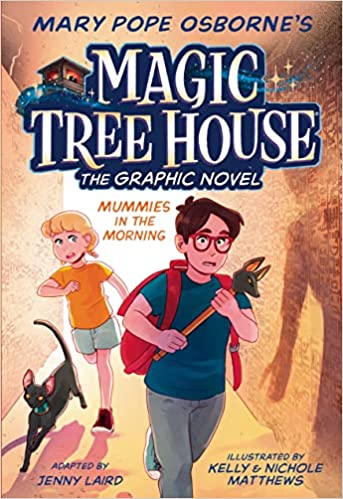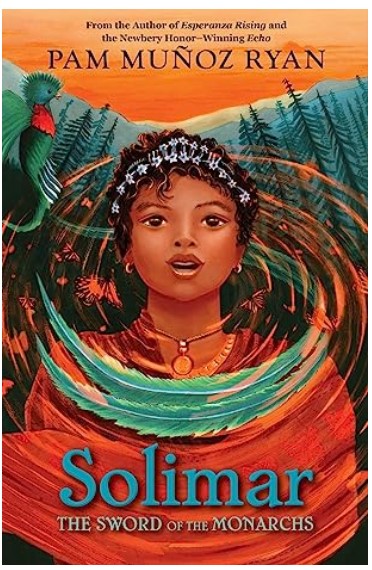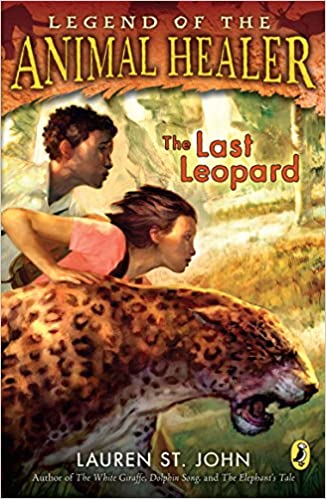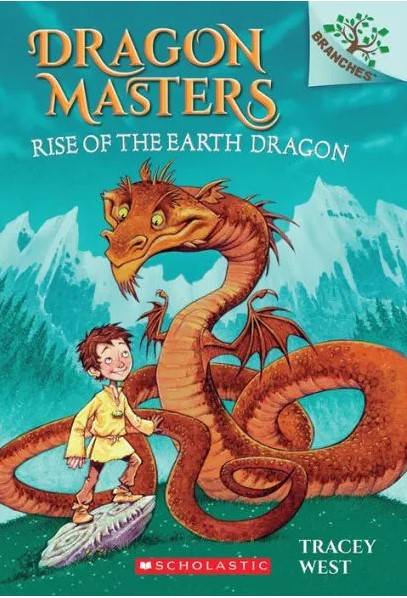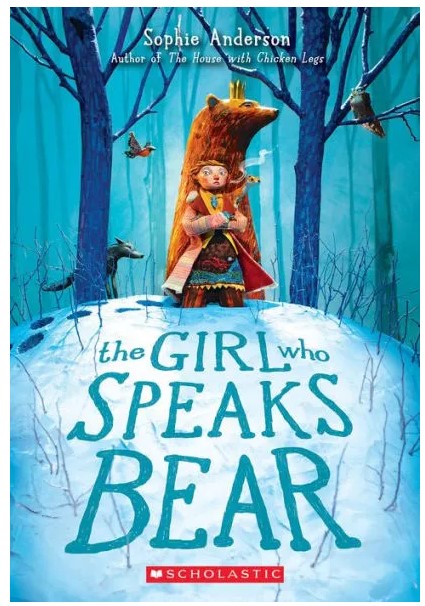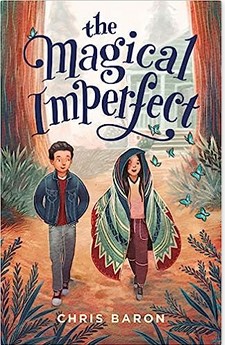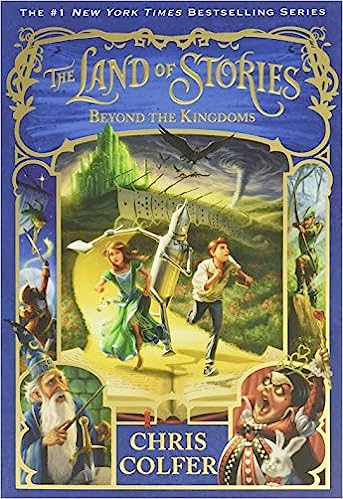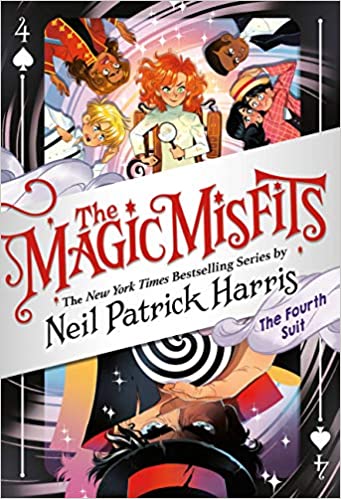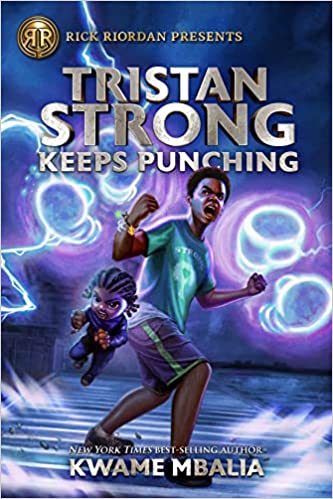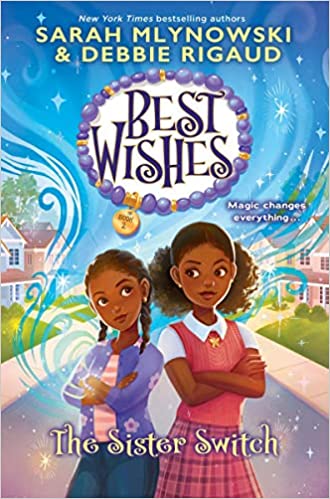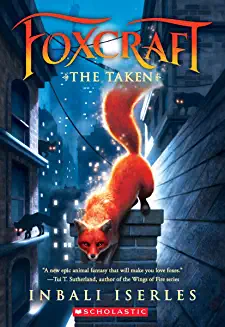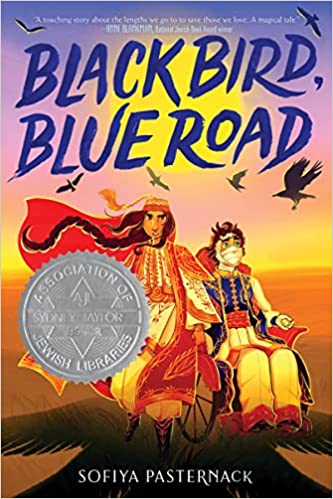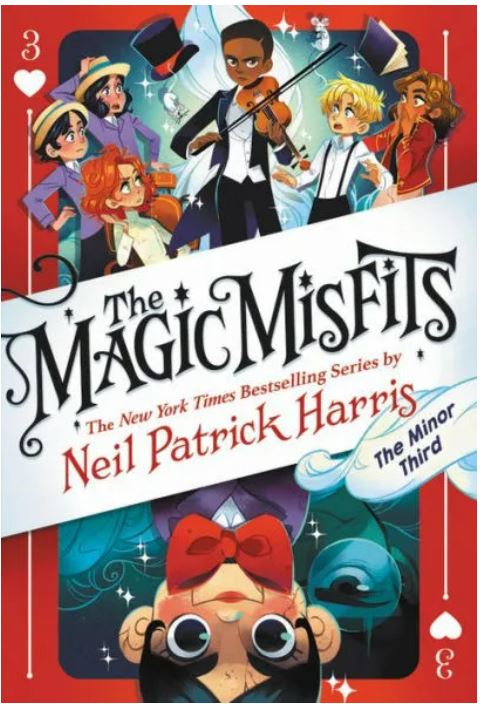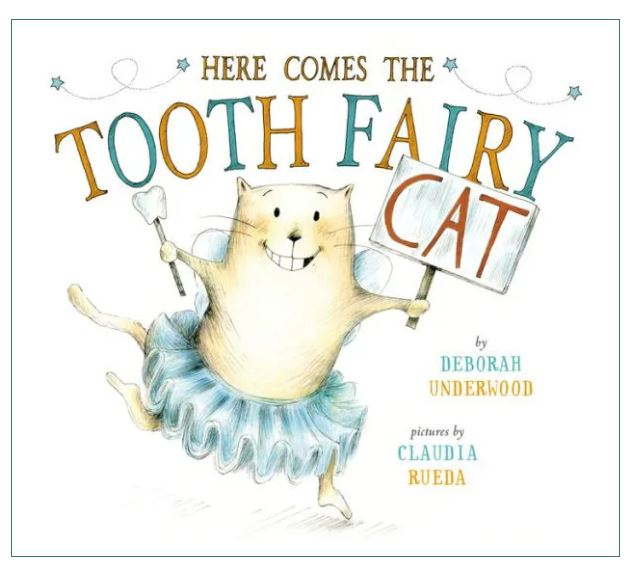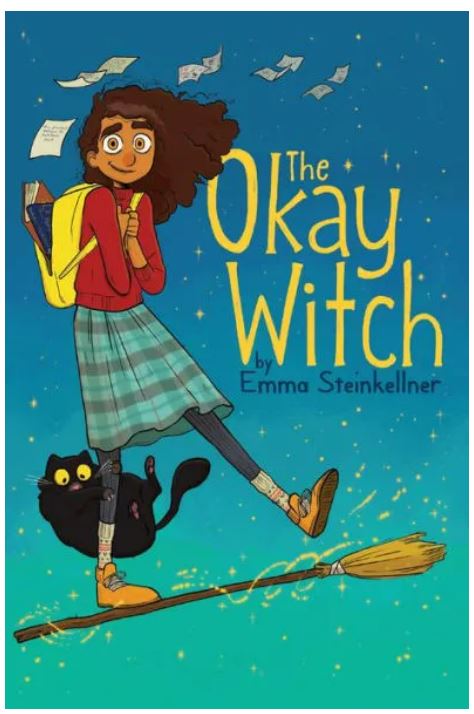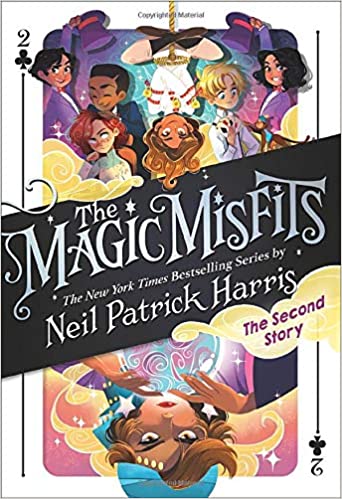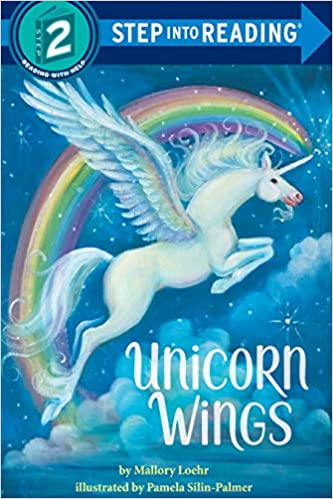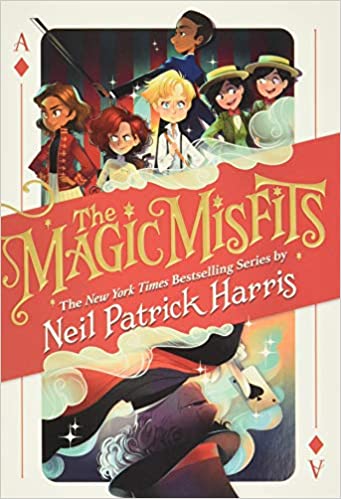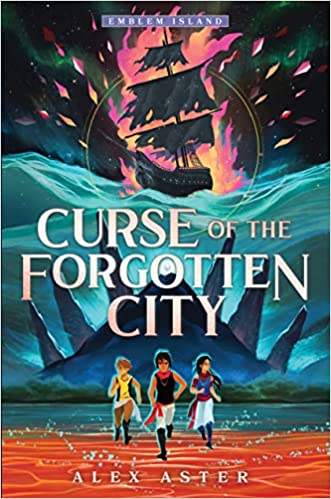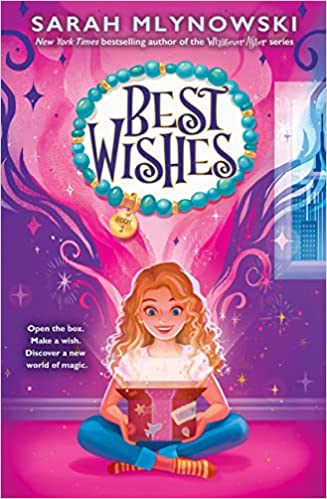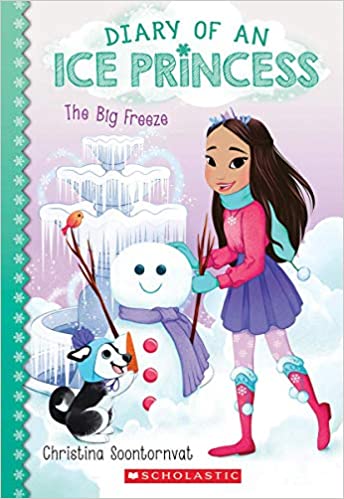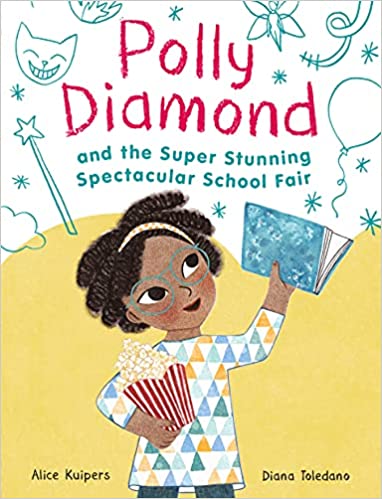Once upon a very badly behaved time, 511-year-old Ebenezer kept a beast in his attic. He would feed the beast all manner of objects and creatures and in return the beast would vomit him up expensive presents. But then, Bethany arrived.
Now, Ebenezer and Bethany are on track to become do-gooders. Bethany wants to get rid of anything in their 15-story house that was vomited out by the beast. Although Bethany is ready to “de-beastify” the house, Ebenezer is much more hesitant. With every magical object Bethany and Claudette sell in a yard-sale, Ebenezer cringes. From gold-plated cutlery to scooters to pianos, they are all sold. Ebenezer has a hard time letting go as he watches the gifts he has acquired over the past 512 years being taken away.
Bethany goes to every place in town in hopes of volunteering, however, she finds her search disappointing when no one trusts her. Since her reputation includes pranks like putting animals in Miss Muddles’ candy shop, the town people believe Bethany’s act of “volunteering” is a sneaky way for her to pull pranks. On top of that, the items Ebenezer and Bethany sold are going rogue. The dinnerware turns food moldy, and the scooter throws anyone off who tries to ride it. Bethany feels hopeless, but she is wants to go into the community and right her wrongs. Yet how can she do good if no one gives her a chance?
Revenge of the Beast is a great sequel. Meggitt-Phillips does a great job foreshadowing. Plus, the beast is brought back in an interesting way that avoids repetition. The reader sees that Bethany and Ebenezer’s previous trials truly impacted their aspirations and values–Bethany more than Ebenezer. Lastly, the ending is a perfect cliff-hanger for the next book.
Friendship is a theme in Revenge of the Beast due to the gained closeness of Bethany and Ebenezer. Ebenezer even offers to be the beast’s servant without any gifts or request if it meant Bethany would be safe. Ebenezer said, “The thought of not seeing [Bethany] again makes me want to cry, because I’ll miss everything about her.” By letting go of the opportunity to use the beast’s powers, Ebenezer shows how much Bethany’s friendship means to him. The story also teaches that it is better to turn the other cheek. Bethany highlights this when she says, “Being cruel to one’s enemies is like chopping off your arm just so you can hit them with it – in the end, all you do is cause more damage to yourself.”
Revenge of the Beast has black and white illustrations, which is a fun way for the reader to see settings and characters’ emotions. However, there are more acts of violence in this book than in The Beast and The Bethany, so a more mature audience may be needed. Plus, the plot lines are more complex due to of each characters’ adventures. Still, readers who enjoyed the previous book will not be disappointed because they will enjoy Bethany’s tough attitude and Ebenezer’s protectiveness over Bethany.
Sexual Content
- None
Violence
- When Ebenezer calls the boys in his neighborhood his friends, they respond with, “We’re not your friends, Ebeloooser. I thought we showed you last time what happens when you call us that.” Ebenezer says “Oh yes, that game where you chase me whilst throwing sticks and stones is great fun . . . ”
- Because of the removal of his beastly gifts, Ebenezer asks Bethany, “Are you trying to kill me or something?”
- The boys were throwing rocks at Ebenezer and the beast. Ebenezer’s “pleasure was interrupted by a rock which sailed through the air, whacked his shoulder, and ripped his ruffled shirt.”
- One of the boys, Nicholas, throws a mud ball at Ebenezer. The ball leaves a mark on his shirt.
- After a group of boys throw rocks at Ebenezer, the beast “spread its mouth wide open and vomited out a blaze of fire.” The beast then tells Ebenezer to, “throw me at the one with the unpleasant face if you want to have some fun.” After Ebenezer does this, the beast vomits itching powder on Nicholas.
- The beast asks Ebenezer if Ebenezer wants him to “puddle” the bully, Nicholas. “Its three eyes were hungry for revenge” when he said “watch as I melt this child into a puddle. It’s my way of saying thank you.” Ebenezer declines the beast’s offer.
- The beast suggests “puddling” Ebenezer’s mother after Ebenezer informs the beast that his mother said Ebenezer will make friends after he stops being annoying. The beast says, “your mother’s a fool. Would you like me to melt her into a puddle?” Ebenezer denies the beast’s request of puddling his mother.
- Ebenezer is reluctant to sell diamond cheese boards to a man named Eduardo. Ebenezer “was about to tell Eduardo to take his nostrils elsewhere when he was treated to a furious kick from Bethany – and it was the sort of kick that told him he shouldn’t push his luck any further.”
- After the children in the orphanage are forced to sew a sequin jacket, they have injuries to their hands. One boy’s hands “were covered with cuts and bandages.”
- Gloria is the new girl at the orphanage. She has taken over Bethany’s spot in being the one everyone fears. She loves attention and praise. So, many of her acts of violence are to receive more. After Gloria performs, she “started pulling Harold Chicken’s hair and telling him off for giving Claudette bigger claps.”
- In one of his flashbacks, Ebenezer returns from Nicholas’ funeral. The beast describes why he died, saying, “my dear boy, I think he would have been a lot more pleased if he hadn’t accidentally impaled himself on his own point stick.”
- Gloria “aimed the mushed apple at Geoffrey” with a catapult. Gloria calls this her “acting method” for her show at the theater. Because Geoffrey is the first friend Bethany made in the last book, Bethany suggests Gloria use her catapult for Timothy, the new orphanage director, instead. However, Gloria launches the apple at Geoffrey anyway.
- After buying a shirt from Ebenezer, a boy says, “every time I put it on, it either tries to strangle me with an overly tight neckline, or the sleeves make me beat myself up.”
- As Ebenezer tries to tell Bethany important news, she gets angry about being interrupted. “Bethany picked up one of the forks and threw it at him.” She told him, “If you don’t leave right now, then I’m going to have to start throwing the knives.”
- Bethany receives a disturbing phone call. “Bethany looked at the phone receiver as if it had just tried to bite her ear off. Then she smashed it against the wall. . .smashing and smashing until there was nothing left but a wire in her hand.”
- The beast eats a parrot named Claudette. “First, I ate all that was in her belly– that took me a while; she was a fat parrot. At the moment, I’m destroying her kind, hopeful personality by showing her that the world is truly a cruel place. After that, it won’t take me long to gobble through the rest of her.” He then says, “I’ve never eaten someone through their insides before – I should do it more often.”
- As the beast controls Claudette’s body, he takes Ebenezer to the attic. He keeps Ebenezer there so Ebenezer does not ruin the beast’s plan of eating Bethany and Gloria at the theater. The injuries the beast gives Ebenezer to take him to the attic and keep him there are described. “There were talon marks on his ankles from where the beast had dragged him upstairs, and his neck was swollen with bruises because the shirt had strangled him every time he had tried to call for help or warn Bethany.”
- The shirt the beast puts on Ebenezer forces him to stay awake. “Every time you close your eyes, the shirt will strangle and squeeze you awake.”
- Bethany becomes angry with Ebenezer and starts beating up muffins. “As she beat up the muffins, she imagined she was beating him up too.”
- The beast says Gloria, “even tried strangling me with this silver rope.” The beast then suggests to Bethany that they should “eat her.”
- The beast uses Claudette’s wings to fly Bethany across town. He drops her but pretends it is a game. However, “the beast likes thinking that Bethany could smash into the ground at any moment.”
- Two of the children in the audience are “puddled” because they were talking. The beast “vomited out a large yellow umbrella and sent it flying above Geoffrey’s head. . . The umbrella opened above Geoffrey’s head, sucked up his wriggling body, and closed itself again. A few moments later, it spat out a puddle through its handle.” Then, “The beast wiggled its fingers and brought the big yellow umbrella hovering over the best seat in the house – which happened to be occupied by Eduardo Barnacle. The beast puddled Eduardo right in between his screaming parents.” Luckily, the umbrella brings them both back in the end.
Drugs and Alcohol
- The man from D.O.R.R.I.S, the undercover agency that captures magical creatures like the beast, puts a special smoke into the air at the theater that allows the audience to fall asleep. The smoke then alters the audience’s memories.
- At the prank shop, the owner suggests Bethany use the “demonic dream-lolly.” He describes, “One lick and your victim will have nightmares for weeks.”
Language
- The boys Ebenezer knew when he was younger called him “Mr. Ebenoozer Loser.”
- Bethany calls people “gitface,” “stupid gitface,” and “selfish gits” many times. She also tells others to “bog off.”
- Bethany uses “flipping” and “freaking” frequently throughout the book. For example, she calls some people “total flipping Idiots.” She also says, “You’re flipping amazing!”
- The beast tells the boys picking on Ebenezer that, “If you or your snotty little friends tell anyone about me, then I will hunt you down.”
- There is frequent name-calling including calling someone a “beastly brat,” a “weak fart,” a “twit,” an “idiot,” and an “unpleasant blip.”
- After Nicholas’ funeral, the beast calls Nicholas “a moron, unworthy of mourning.”
- The words on Claudette’s poster for her performance at the theater says, “Anyone who didn’t buy a ticket would be an ‘UTTER MORON WHO DOESN’T DESERVE TO LIVE.’”
Supernatural
- Just like in the first book, the beast is told to vomit out special gifts for Ebenezer. Ebenezer thinks of a gift the beast gave: a gold-button shirt that fit whoever wore it perfectly. It was self-cleaning and self-tailoring.
- In a flashback, the beast vomits out a memory book for Ebenezer. It shows Ebenezer the person he misses most. In the present day, Ebenezer looks at this memory book often to see the life he used to have with the beast.
- The gold-buttoned shirt Ebenezer sold to Eduardo was pulling Eduardo. “He was walking very strangely – with two outstretched arms and a pair of feet dragging along the ground, as if he were being pulled toward Ebenezer’s house by an invisible thread.”
- Claudette can lay eggs that have any food a person desires. For example, “Claudette laid an egg filled with pains au chocolat for Bethany.”
- The scooter Bethany uses is controlled by the beast. The scooter drives itself and can go as fast as it pleases.
- The silver rope that was vomited out by the beast is used to drag Gloria to the theater. The beast wants her to go to the theater so he can eat her. The rope drags her to the front of the stage where the beast sits.
Spiritual Content
- None
